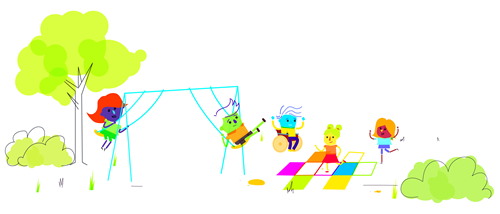Our Theoretical Model

Having credible evidence to support the work we do is a priority for us at stormbreak. We achieve this in many ways including collecting insight from the professionals and young people we work with, engaging in current research and thinking, evaluation of our programmes and gathering data on scale and impact.
Stormbreak programmes provide a unique integration of psychologically informed physical movement to proactively nurture mentally healthy children. Underpinning our approach is our Theoretical Model. This model draws upon seminal theories, essential psychological approaches and pedagogies to ensure how and what we deliver is biopsychosocial, systemic, developmental and multidisciplinary.
In essence, a crucial part of the stormbreak approach is making connections between the mind, the body and the environment of the child. For a long time in Western culture, the body and the mind have sat as two separate entities, which has led to a disconnection of knowledge, understanding, and learning from emotions, experiences and feelings. However, in recent years, movement-based pedagogies have emerged as a promising whole school approach for supporting the child as a ‘whole being’ (Stolz 2015).
Stormbreak is therefore intentional and purposeful in using movement, alongside conversation, to support a child’s current and future mental health.
As we continue to learn about the brain, we understand its crucial role in the development of emotional wellbeing. Neuroscience explains that cognition and emotion work hand in hand and contribute to the brain’s Executive Function. The Executive Function is a set of skills including emotional regulation, focus and attention, decision-making and learning. This set of skills depends upon three types of brain function: working memory, mental flexibility, and self-control. Without these skills we are likely to revert to our primal responses of fight, flight or freeze when emotions become too big, or we sense danger.
Environment and experience, as well as our genes, can play an important part in shaping our behaviours. For instance, adversities and negative life events may interfere with physiological developmental processes in the brain, leading to altered neural circuits that have been associated with physical aggression, depression, and anxiety. Whereas positive life experiences and enriched environments can nurture healthy brain function and behaviour.
|
“We understand the Neuroscience of threat and emotional states. We focus our attention on settling and soothing so that we support children to learn how to best regulate themselves (Polyvagal Theory, Porges, 1995) and thus stay within/expand their ‘Window of Tolerance’ (Seigel, 1999). When a child is within their Window of Tolerance they can thrive, manage and cope with their emotions better.” (stormbreak’s Theoretical Model) |
Physical activity is one of the most studied areas to enable neuroplasticity [i.e. the ability for neural connections in the brain to change through growth and reorganisation]. By building a movement rich and physically active environment it is possible to elicit positive neural changes in the brain.
Furthermore, and in accordance with something called Hebbian Theory (De Fano, Leshem & Ben-Soussan, 2019), one of the most effective ways to create a more efficient brain and more focal recruitment of different brain areas, is to strengthen the synapses through repeated experiences and learning.
The stormbreak approach facilitates regular and habitual movement, alongside conversation about mental health and normalising a range of feelings. Our aspiration is for children to stormbreak every day, but if this is not possible, the more stormbreaks they can do, the better. You will notice that in many of our stormbreak activities the movements have a repeatable nature and include the seven primal movements of:
- Twist
- Push
- Pull
- Bend
- Squat
- Lunge
- Gait
For example, in the following stormbreak activities, do you notice any primal movement actions that are deliberately used and repeated?
Over the coming weeks see if you can explore some different stormbreak activities, or revisit some beloved favourites. Can you observe where deliberate and intentional approaches are being used and note the impact this is having on the child or children you are ‘stormbreaking’ with.
We would love to hear how you get on.
Dr Vicky Randall, Programme Manager at stormbreak
References
De Fano, A.; Leshem, R.; Ben-Soussan, T.D. Creating an Internal Environment of Cognitive and Psycho-Emotional Well-Being through an External Movement-Based Environment: An Overview of Quadrato Motor Training (2019). International Journal of Environmental Research and Public Health, 16, 2160.
Stolz, S. A (2015) Embodied Learning, Educational Philosophy and Theory, 47:5, 474-487, DOI: 10.1080/00131857.2013.879694

